Home / FAQ
We are here to help you get answers to your questions about OneSimCard phones and services.
All usage details and charges are available in the OSCAR SIM Management portal. These records can also be downloaded as a CSV File from the SIM card page of the OSCAR portal. These downloads are available for 1 month at a time, going back 2 years.
In addition, you can filter SIM cards using the following parameters in the reports section of the OSCAR Portal (certain parameters are not applicable to Pooled account):
Alarms can also be set in OSCAR to proactively notify you if certain criteria are met, Alarms include:
Yes! Both Pay-As-You-Go (PAYG) and Pooled plans offer data discount plans and in most countries our IoT SIM cards provide billing of data in 1 kb increments, and the effective per MB cost start as low as $0.005 (1/2 of a cent) per MB. Learn more about both PAYG and Pooled data plans.
These plans, especially Pooled data plans, are customized to each client’s particular needs and our IoT experts will be glad to provide a proposal based on your unique needs. Please fill out the Custom Quote Request form and we will be in touch within 1 business day.M2M / IoT SIM cards are offered to corporate accounts with a minimum of 5 SIM cards on the account.
The Starter Kit could be purchased immediately on-line.
Additional SIM cards can be ordered from the OSCAR SIM management platform.
If you would like to place an order bypassing the Starter Kit, you can do this here, or you can have a discussion with one of our IoT experts by filling out the Custom Quote Request form.
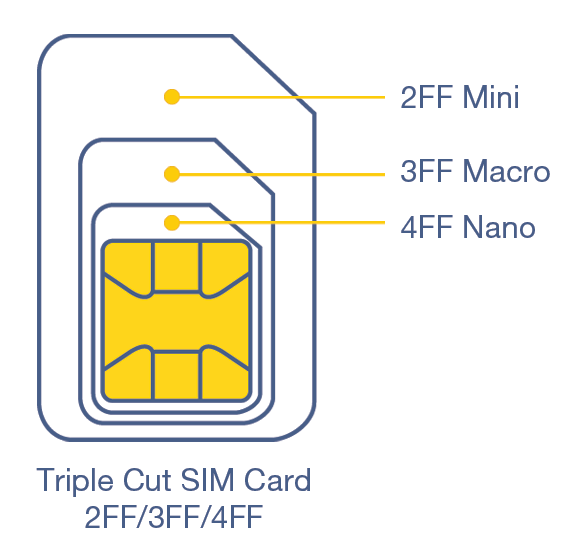
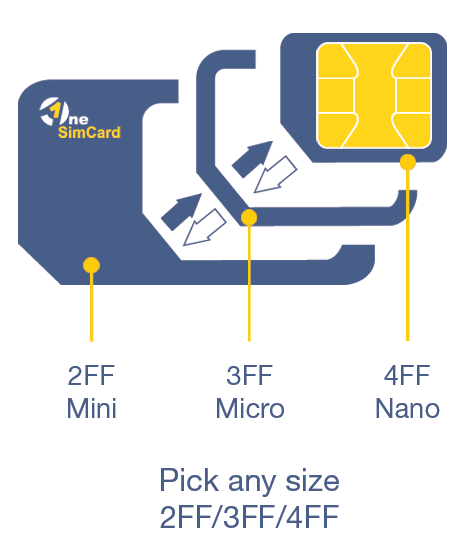
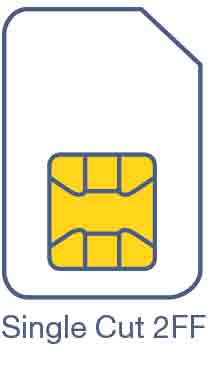
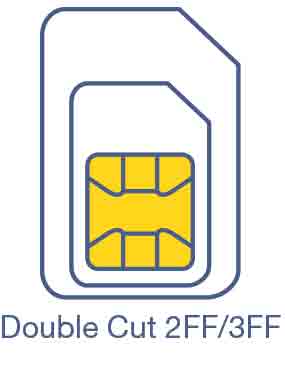
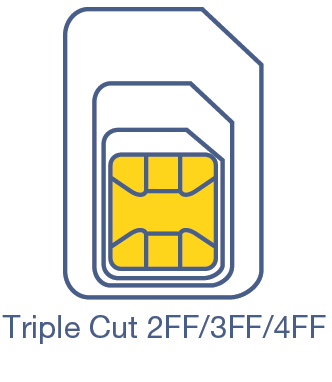
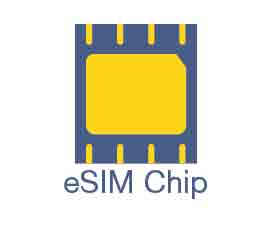
Embedded SIM card chips can be soldered directly to the PCB – Printed Circuit Board of the device. They are not removable, but can be reprogrammed remotely.
All available SIM card size options are displayed during checkout at the OSCAR portal. If you don’t see the option that you need, please let us know and we’ll do our best to find a solution.
Machine to machine (M2M) refers to direct communication between devices using wired and wireless communication channels. In different industries such communication may be referred to by different abbreviations (SmartGrid, Smart Buildings, Smart Cars and alike, V2V, V2I and V2x - "vehicle to vehicle", "vehicle to infrastructure" and "vehicle to anything").
IoT is an acronym for Internet of Things. Wikipedia defines IoT as the network of physical devices, vehicles, home appliances, and other items embedded with electronics, software, sensors, actuators, and connectivity which enables these things to connect and exchange data.
Many consider M2M to be at the core of IoT. In this regard IoT is simply a broader concept. IoT lets devices speak with one another through a much larger network. M2M is what provides the Internet of Things with the connectivity which enables capabilities that would not be possible without it.
A Subscriber Identity Module or Subscriber Identification Module (SIM), known as a SIM card, stores information which is used to identify a subscriber on mobile devices. A SIM card is a small chip that is inserted into a mobile device.
There are different kinds of SIM cards. Most common today are plastic SIM cards which come in 3 different sizes: 2FF – Mini, 3FF –Micro and 4FF- Nano. Plastic SIM cards can be removed & used in other mobile devices. SIM cards can be manufactured for different environments and come in commercial and industrial strength versions. eSIMs are another type of IoT SIM card which is gaining broader adoption and are discussed belowThere are also SIM cards packages in ceramic miniature packaging that can be soldered directly to the PCB – Printed Circuit Board of the device. There is more than one type of eSIM. Most common is MFF2 type with 8 pins. In addition, an eSIM can be embedded in other integrated circuits devices which are also soldered directly to the PCB. The eSIM card is not removable, but could be reprogrammed with another network profile if required to change the network provider.
Learn more about IoT eSIMs from OneSimCard, or fill out a Custom Quote Request form to speak with one of our IoT experts.
An Access Point Name (APN) is the name of a gateway between a GSM, GPRS, 3G or 4G mobile network and another computer network, usually the public Internet.
A device making a data connection must be configured with an APN that will be sent to the mobile network carrier. After analyzing this APN, the carrier will determine what type of network connection should be created. For example: which IP addresses should be assigned to a wireless device, which security methods should be used, and how, or if, it should be connected to a private customer network. An APN can be either public or private.
Private APN allows you to limit access on your devices to a narrow network. If the device does not have an APN pre-programmed, it will not be able to access the internet. The number of SIM cards with private APN can be as few as one or as many as 1 million. Learn more about Private APNs.
An Internet Protocol address (IP address) is a numerical label assigned to each device connected to a computer network that uses the Internet Protocol for communication. An IP address serves two principal functions: host or network interface identification and location addressing.
Public IP addresses (sometimes called Internet IPs) are what differentiate all devices that are plugged into the public internet. An IP address works similarly to a physical location’s street address. Just like a street address directs mail to the addressee, IP address directs data to the appropriate device.
An Internet Protocol address (IP address) is a numerical label assigned to each device connected to a computer network that uses the Internet Protocol for communication. An IP address serves two principal functions: host or network interface identification and location addressing.
Private IP addresses are only addressable from within devices the same IP range. This adds a layer of security to your IoT SIM cards because only devices on the same Private Network can access the SIM(s). This addressing can be accomplished through Peer-to-Peer communication or through a VPN Connection. If you would like to learn more about Private Ips, please fill out our Custom Quote Request form & one of our experts will be back to you within 1 business day.
A fixed IP address is sometimes referred to as a static or dedicated IP address. It is called fixed because it does not change as device connects and disconnects from the network.
Pretty much any device that can use an IP address can be configured to have a static IP address. This may be done through the device giving out IP addresses (like the router) or by manually typing the IP address into the device from the device itself.
Learn more about static IP.
A static public IP allows connection to the device with the public static IP from any machine anywhere at any time. Such convenience often creates certain security risks which need to be addressed by the device owner (passwords, multilayered verifications, firewalls, etc).
Learn more about the problems Public IP's can create by reading our Blog about this.
Unlike Public IPs, Private IPs are hidden. The only way to access Private IP is by using a VPN, or through Peer-to-Peer communication which in turn makes such connection more secure.
3G is short for third generation of wireless mobile telecommunications technology. It is an upgrade for 2G and 2.5G GPRS networks for faster internet speed.
4G is the fourth generation of broadband cellular network technology that succeeded 3G.
The Home Location Register (HLR) is a database that contains details of each SIM card subscriber that is authorized to use a particular GSM network. The HLR is maintained by the network operator. Each SIM has a unique identifier called an International Mobile Subscriber Identity (IMSI) which is the primary key to each HLR record.
Internet Protocol Security (IPsec) is a secure network protocol suite that authenticates and encrypts the packets of data sent over an internet protocol network. It is used in Virtual Private Networks (VPNs).
Internet Protocol security (IPsec) uses cryptographic security services to protect communications over Internet Protocol (IP) networks. IPsec supports network-level peer authentication, data-origin authentication, data integrity, data confidentiality (encryption), and replay protection.
OpenVPN is a free and open-source software application for virtual private network (VPN) implementation. OpenVPN uses a custom security protocol that utilizes SSL/TLS for key exchange. This allows the creation of secure point-to-point or site-to-site connections in routed or bridged configurations and remote access facilities.
From SIM cards in Blocked Status to SIM Cards with balances below $1.00 and everything in between. If you need to quickly zoom in on a particular segment of your SIM cards, the Reports tool can help.
At this time you can generate reports based on the following:
Providing cutting-edge security tools is one of our top priorities. Currently our IoT SIM platform offers the following security features: IMEI Lock, IMEI change notification, configurable data limits, IP Filtering, APN, VPN and Static IPs.
Read more about these security technologies here.
You can track service usage on all of your SIM cards by logging into your OSCAR IoT portal. Click on the SIM card you’d like to check, go to Service and choose between the following options:
1. Active Data Session. Check if there is any active data session running on the SIM.
2. Today Use Records. See the latest use records over the past 24 hours.
EMV, EMNS and TCNS type SIM card types offer additional options.
3. Network Registration History. Check the last time the device was connected to a network. It also shows MCC/MNC value, i.e. specific network the SIM was last connected to.
4. Check SMS Delivery - See the status of SMS messaging to your SIM card to ensure messages are being delivered.
BITW type IoT SIM cards offer additional options:
5. View IMEI - Allows you to see the most recent IMEI with which the SIM card was associated.
6. View Event History - Shows you the last 20 network events for the SIM card.
If you are suspecting connectivity issues with any of your devices, you can utilize the “Reconnect SIM” feature in the service menu of the SIM in the OSCAR platform.
Reconnect SIM. This is a troubleshooting option available for every OneSimCard. This feature allows you to disconnect the SIM from the network for a short time and then the device will attempt to reconnect to the network again. This option should be only used if there is an issue with the network connection of the device.
Absolutely. Using the Portal SMS feature in your M2M account, you can:
Portal SMS allows you to send the AT command to the device directly from the portal and then receive the reply from the device directly on the screen. The total cost of the round-trip SMS communication using this method is $0.11. This is much less than the cost of a regular SMS sent by the SIM. The $0.11 round-trip cost is the same in every country.
The option to send a batch of Portal SMS to many devices is available in the SIM Cards page of the OSCAR platform at the bottom of the screen. For example, you can set up the APN on all selected devices using this batch option.
Portal SMS is currently available on EMV, EMNS, & TCNS type SIM cards.
Yes. We offer the OneSim IoT app on both Google Play for Android and the App Store for IOS
You will be able to access and manage all IoT SIM cards on your account, regardless of your SIM deployment size.
Yes!! You can send an SMS to the IoT SIM. The most reliable way to send the SMS and receive replies is through your online account portal. On your online account, in the “Recharge menu,” you will see a link for “Portal SMS.” You can send SMS to and receive SMS from the SIM card using this method. NOTE: to use SMS, you will need an optional SMS package.
Shop
Company
Support
Contact
© 2006-2026 Belmont Telecom Inc., DBA OneSimCard.com. All rights reserved
